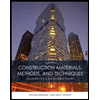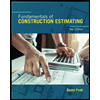School of I- I- 30 ft C1 B1 B2 E G1 4 @ 8 ft Floor 13 Span C3 G2 4 @ 8 ft -I- 30 ft 1. Calculate the dead load, wp (kip/ft), applied to beam B2 based on tributary load analysis for the given loads and floor span direction. In addition to the weight of concrete, include an additional 25 psf dead load (total of fixed partitions, HVAC, and drop ceiling). Neglect the beam self-weight and the weight of the corrugated steel sheet metal. 2. Draw an FBD of beam B2 showing the calculated dead load, wp, and support reactions. 3. Report the maximum bending moment (kip-ft) in beam B2 due to dead load. 4. What is the minimum uniform live load, L. (psf), for this occupancy? 5. Calculate the live load, WL (kip/ft), applied to beam B2 based on tributary load analysis for the occupancy and floor span direction. 6. Draw an FBD of beam B2 showing the calculated live load, wL, and reactions 7. Report the maximum bending moment (kip-ft) in beam B2 due to live load. 8. Is live load reduction allowed for this occupancy? 9. Whether or not live load reduction is allowed, what is the adjusted tributary area, KLLAT (ft²), supported by beam B2? 10. Likewise, what is the adjusted tributary area, KLLAT (ft²), supported by column C2, regardless of if live load reduction is allowed or not?
School of I- I- 30 ft C1 B1 B2 E G1 4 @ 8 ft Floor 13 Span C3 G2 4 @ 8 ft -I- 30 ft 1. Calculate the dead load, wp (kip/ft), applied to beam B2 based on tributary load analysis for the given loads and floor span direction. In addition to the weight of concrete, include an additional 25 psf dead load (total of fixed partitions, HVAC, and drop ceiling). Neglect the beam self-weight and the weight of the corrugated steel sheet metal. 2. Draw an FBD of beam B2 showing the calculated dead load, wp, and support reactions. 3. Report the maximum bending moment (kip-ft) in beam B2 due to dead load. 4. What is the minimum uniform live load, L. (psf), for this occupancy? 5. Calculate the live load, WL (kip/ft), applied to beam B2 based on tributary load analysis for the occupancy and floor span direction. 6. Draw an FBD of beam B2 showing the calculated live load, wL, and reactions 7. Report the maximum bending moment (kip-ft) in beam B2 due to live load. 8. Is live load reduction allowed for this occupancy? 9. Whether or not live load reduction is allowed, what is the adjusted tributary area, KLLAT (ft²), supported by beam B2? 10. Likewise, what is the adjusted tributary area, KLLAT (ft²), supported by column C2, regardless of if live load reduction is allowed or not?
Steel Design (Activate Learning with these NEW titles from Engineering!)
6th Edition
ISBN:9781337094740
Author:Segui, William T.
Publisher:Segui, William T.
Chapter9: Composite Construction
Section: Chapter Questions
Problem 9.2.1P: A W1422 acts compositely with a 4-inch-thick floor slab whose effective width b is 90 inches. The...
Related questions
Question

Transcribed Image Text:School of
I-
I-
30 ft
C1
B1
B2
E
G1
4 @ 8 ft
Floor
13
Span
C3
G2
4 @ 8 ft
-I-
30 ft
1. Calculate the dead load, wp (kip/ft), applied to beam B2 based on tributary load
analysis for the given loads and floor span direction.
In addition to the weight of concrete, include an additional 25 psf dead load (total
of fixed partitions, HVAC, and drop ceiling). Neglect the beam self-weight and the
weight of the corrugated steel sheet metal.
2. Draw an FBD of beam B2 showing the calculated dead load, wp, and support reactions.
3. Report the maximum bending moment (kip-ft) in beam B2 due to dead load.
4. What is the minimum uniform live load, L. (psf), for this occupancy?
5. Calculate the live load, WL (kip/ft), applied to beam B2 based on tributary load
analysis for the occupancy and floor span direction.
6. Draw an FBD of beam B2 showing the calculated live load, wL, and reactions
7. Report the maximum bending moment (kip-ft) in beam B2 due to live load.
8. Is live load reduction allowed for this occupancy?
9. Whether or not live load reduction is allowed, what is the adjusted tributary area,
KLLAT (ft²), supported by beam B2?
10. Likewise, what is the adjusted tributary area, KLLAT (ft²), supported by column C2,
regardless of if live load reduction is allowed or not?
Expert Solution
This question has been solved!
Explore an expertly crafted, step-by-step solution for a thorough understanding of key concepts.
Step by step
Solved in 2 steps with 11 images

Recommended textbooks for you

Steel Design (Activate Learning with these NEW ti…
Civil Engineering
ISBN:
9781337094740
Author:
Segui, William T.
Publisher:
Cengage Learning

Architectural Drafting and Design (MindTap Course…
Civil Engineering
ISBN:
9781285165738
Author:
Alan Jefferis, David A. Madsen, David P. Madsen
Publisher:
Cengage Learning

Traffic and Highway Engineering
Civil Engineering
ISBN:
9781305156241
Author:
Garber, Nicholas J.
Publisher:
Cengage Learning

Steel Design (Activate Learning with these NEW ti…
Civil Engineering
ISBN:
9781337094740
Author:
Segui, William T.
Publisher:
Cengage Learning

Architectural Drafting and Design (MindTap Course…
Civil Engineering
ISBN:
9781285165738
Author:
Alan Jefferis, David A. Madsen, David P. Madsen
Publisher:
Cengage Learning

Traffic and Highway Engineering
Civil Engineering
ISBN:
9781305156241
Author:
Garber, Nicholas J.
Publisher:
Cengage Learning

Solid Waste Engineering
Civil Engineering
ISBN:
9781305635203
Author:
Worrell, William A.
Publisher:
Cengage Learning,

Construction Materials, Methods and Techniques (M…
Civil Engineering
ISBN:
9781305086272
Author:
William P. Spence, Eva Kultermann
Publisher:
Cengage Learning

Fundamentals Of Construction Estimating
Civil Engineering
ISBN:
9781337399395
Author:
Pratt, David J.
Publisher:
Cengage,